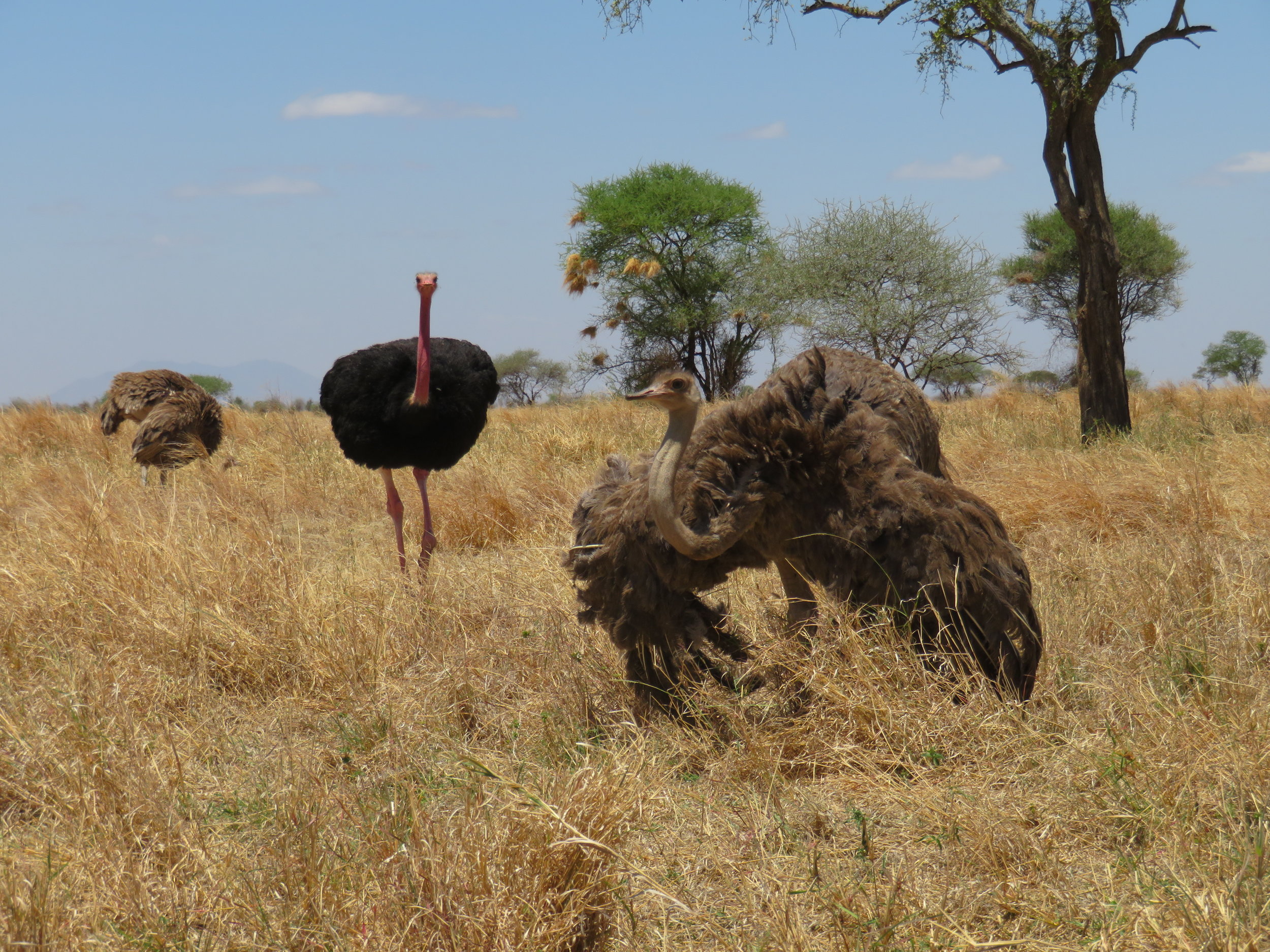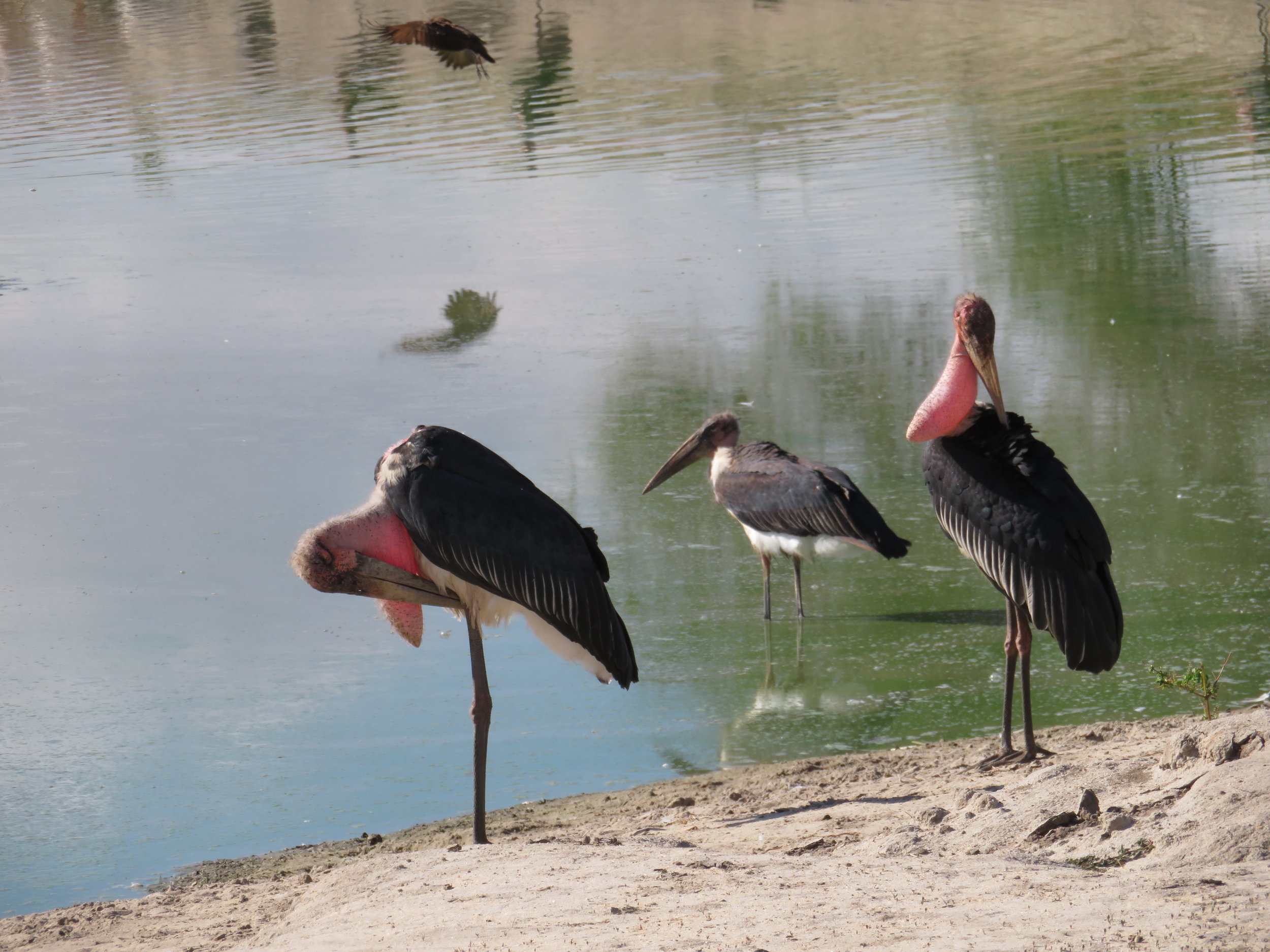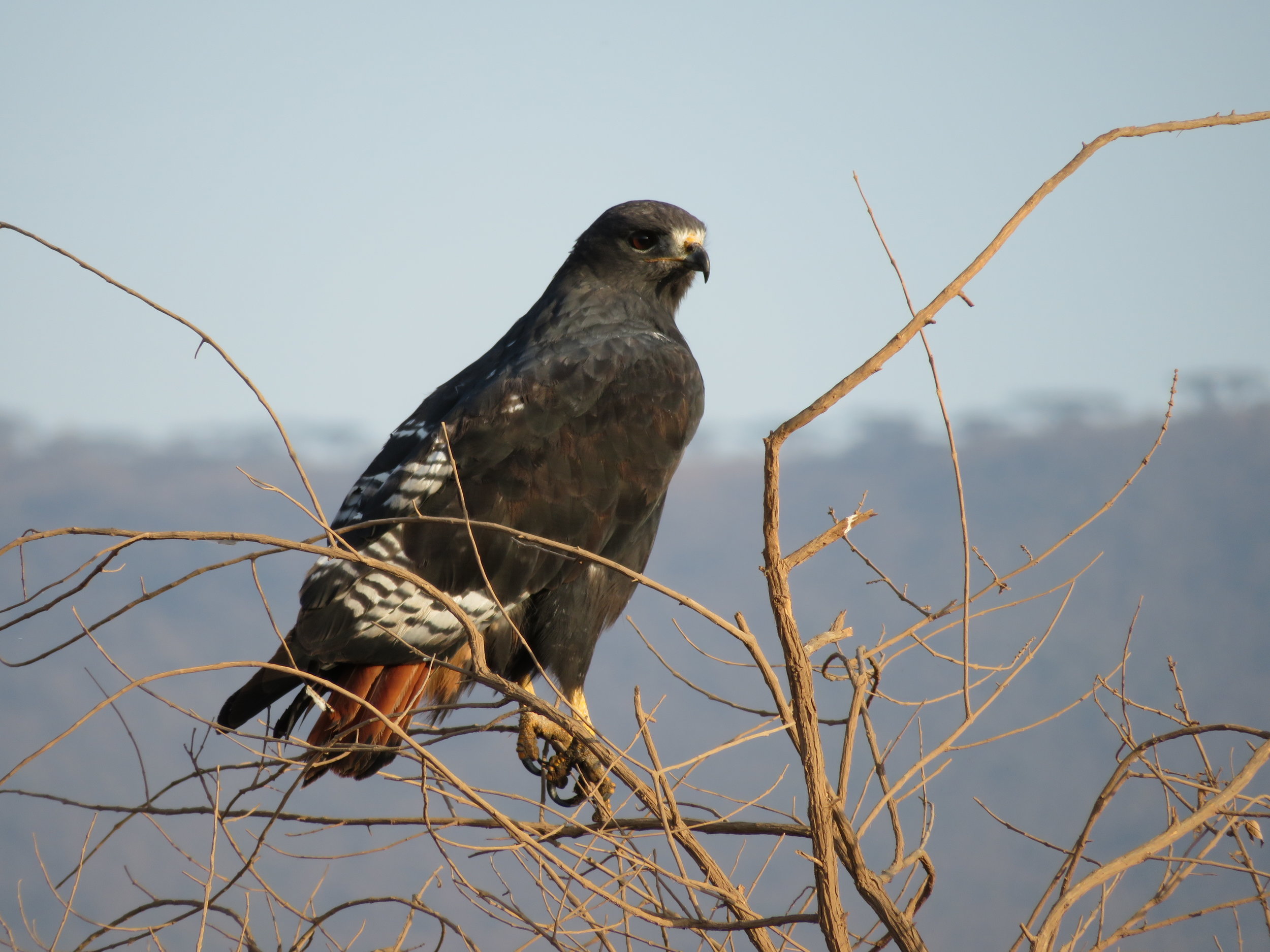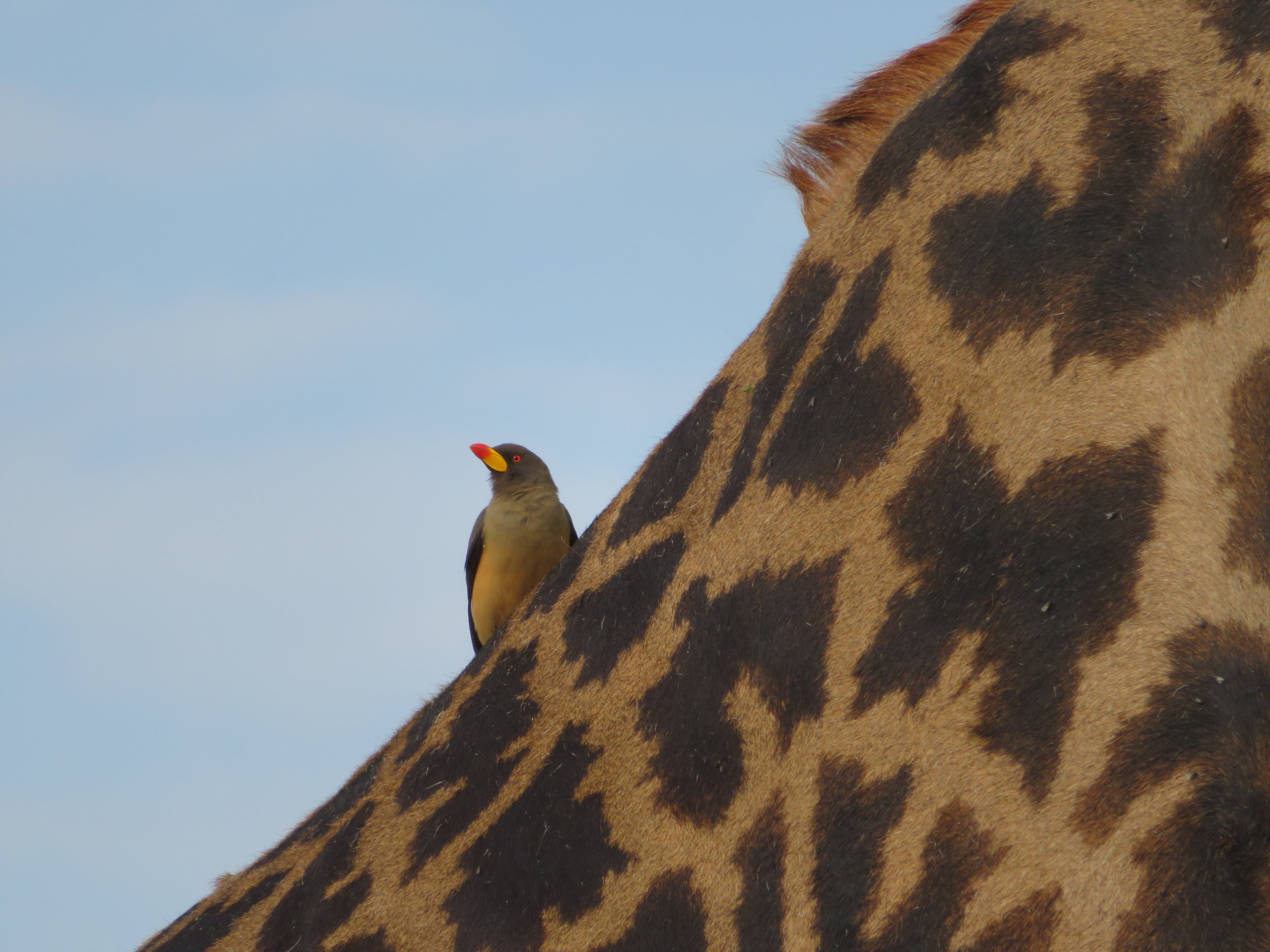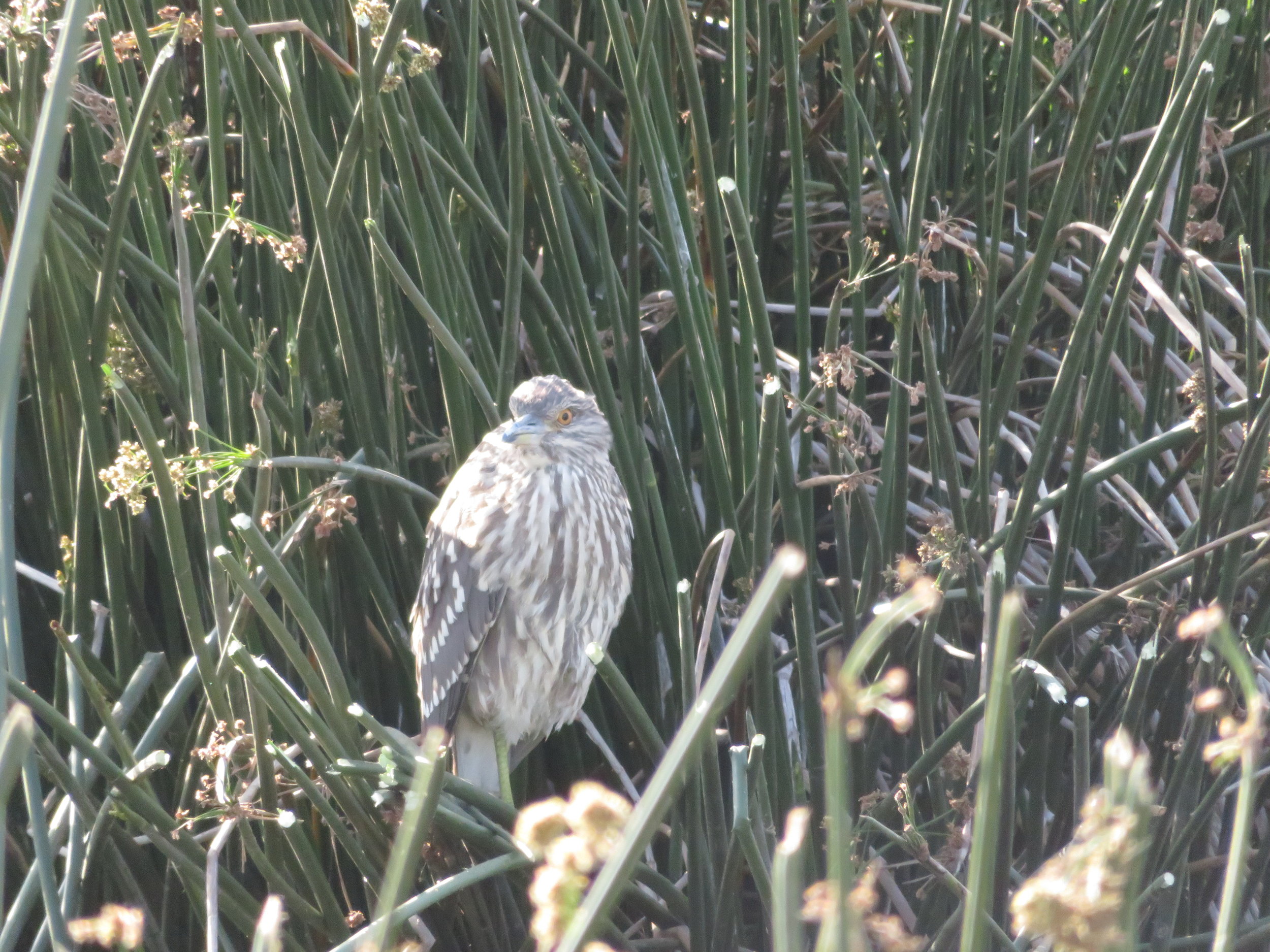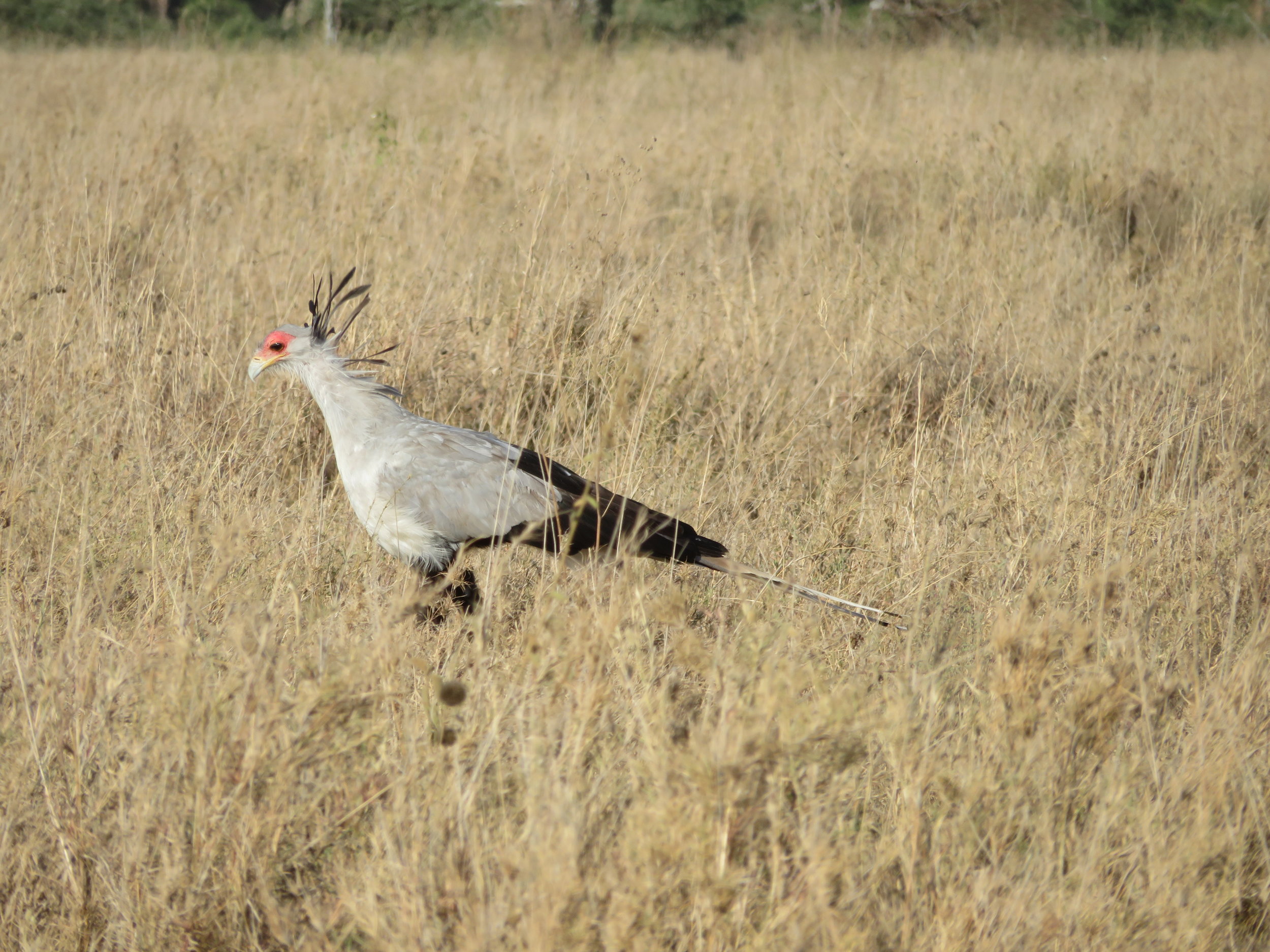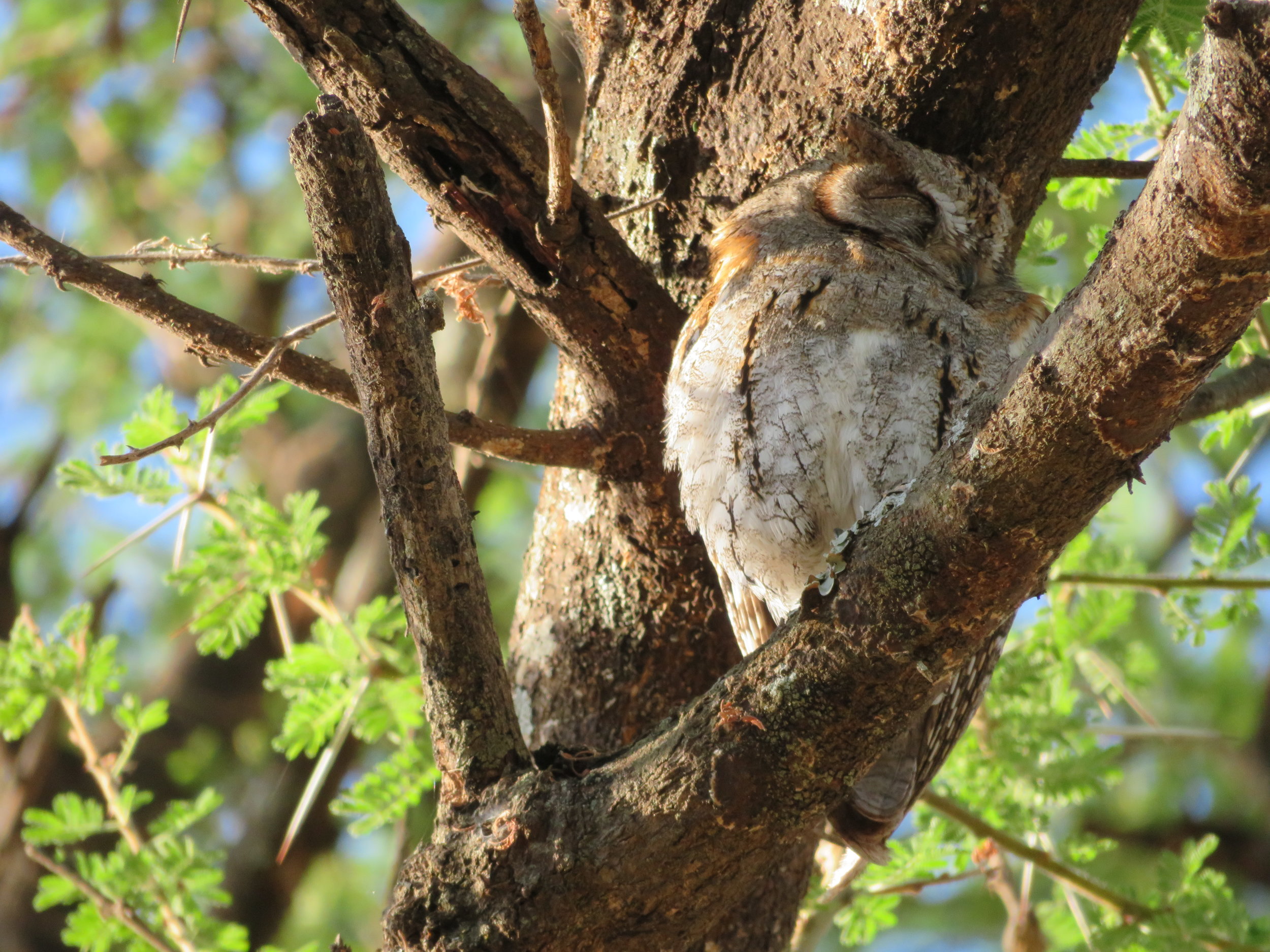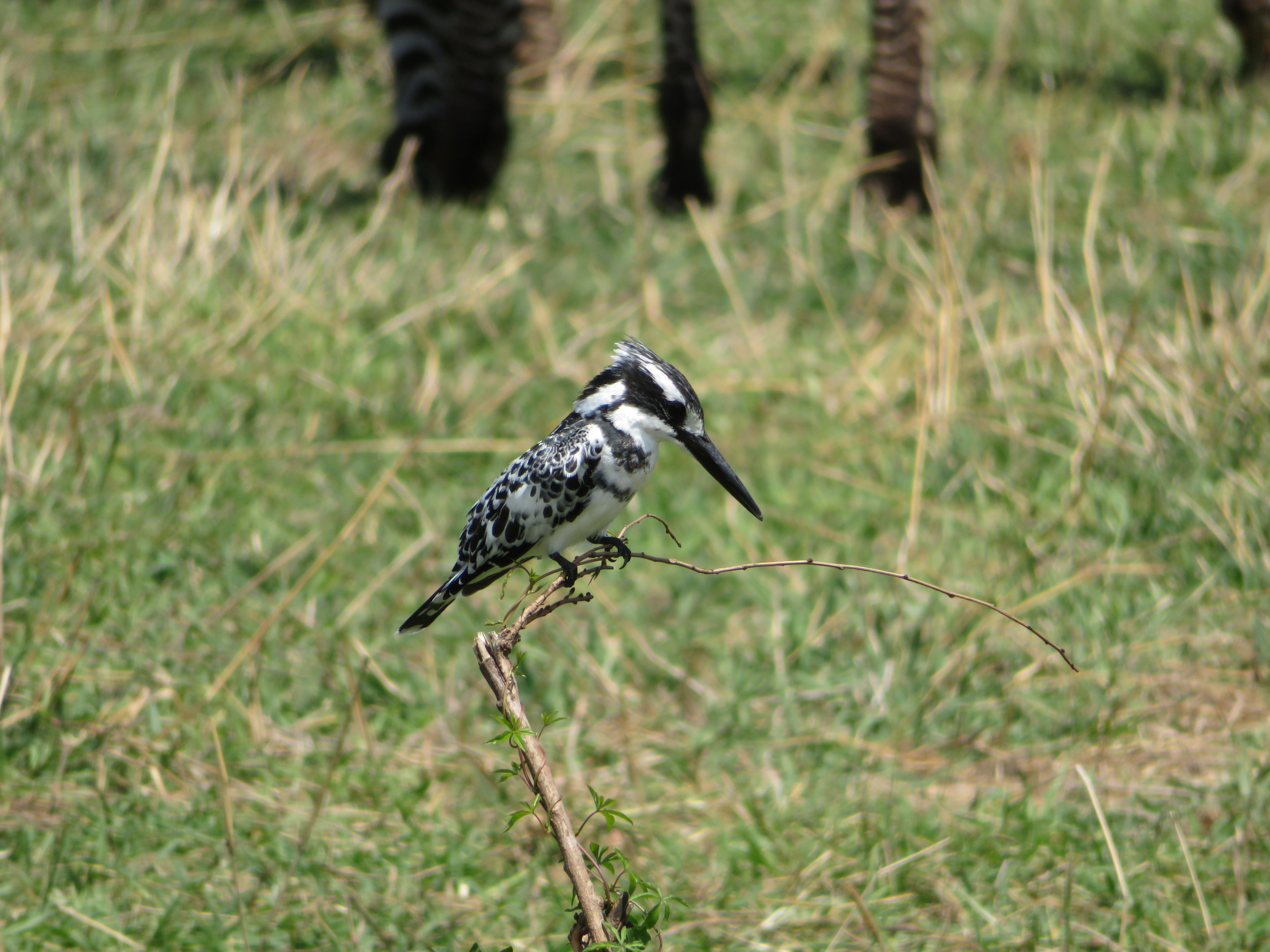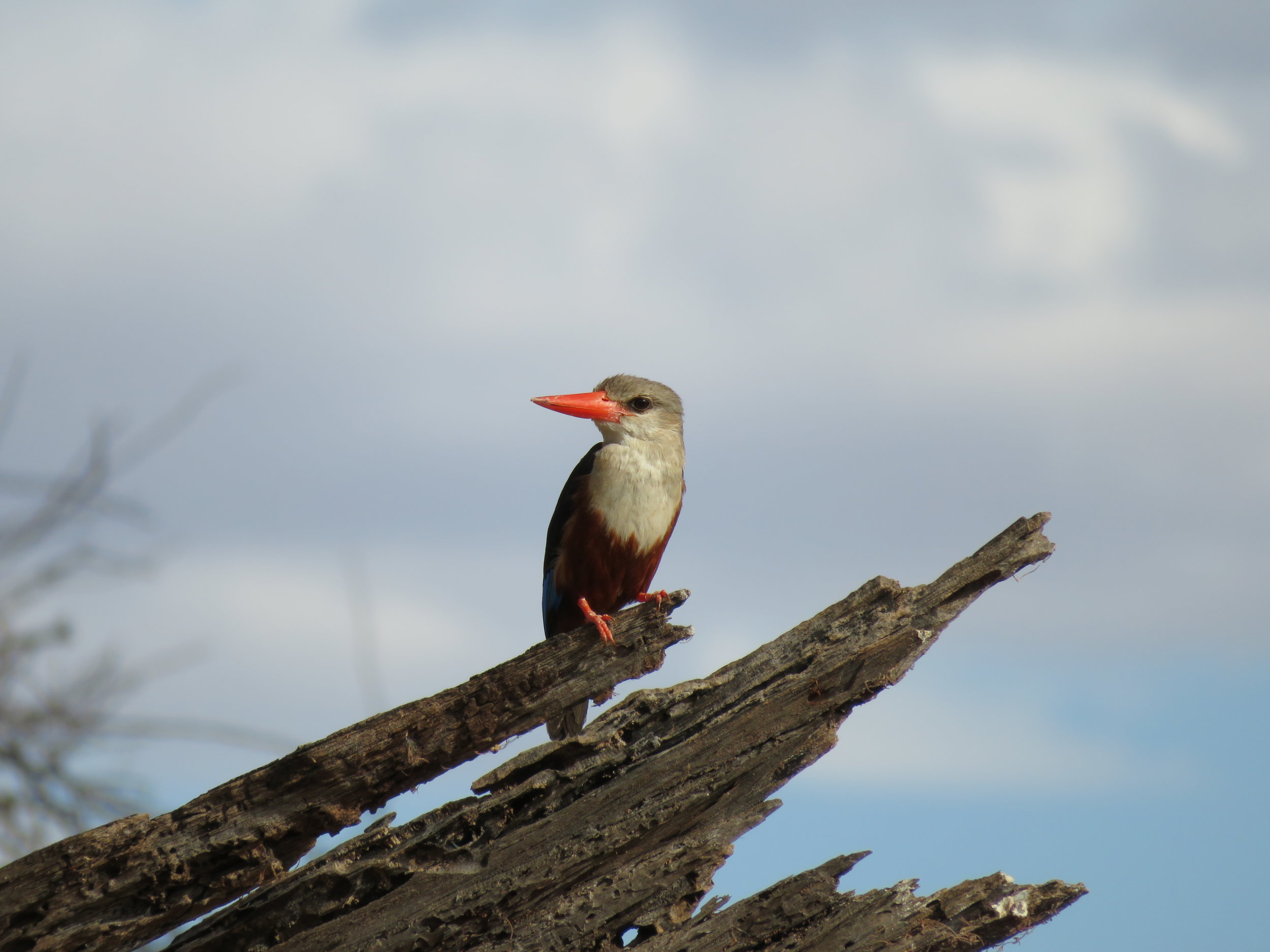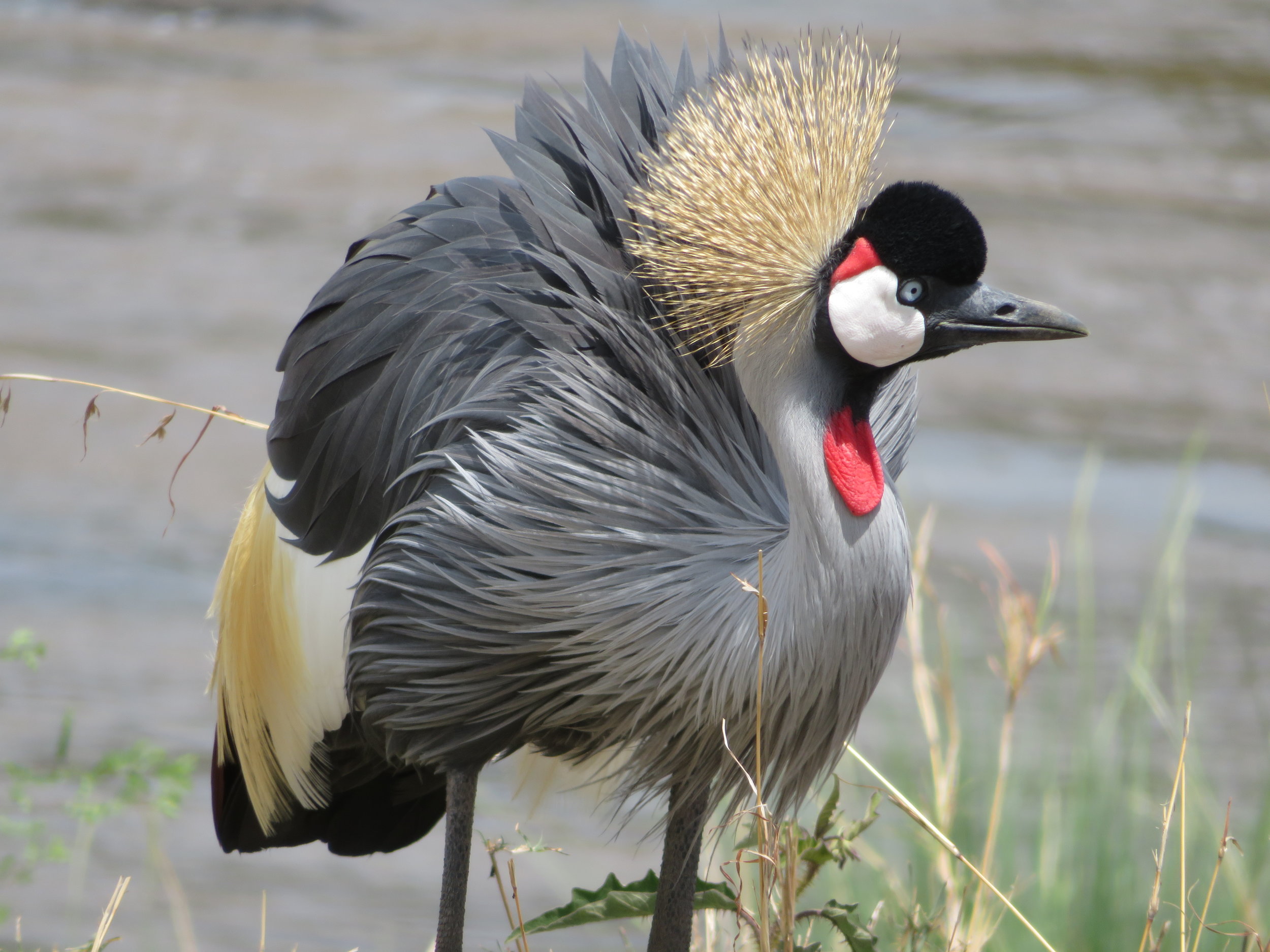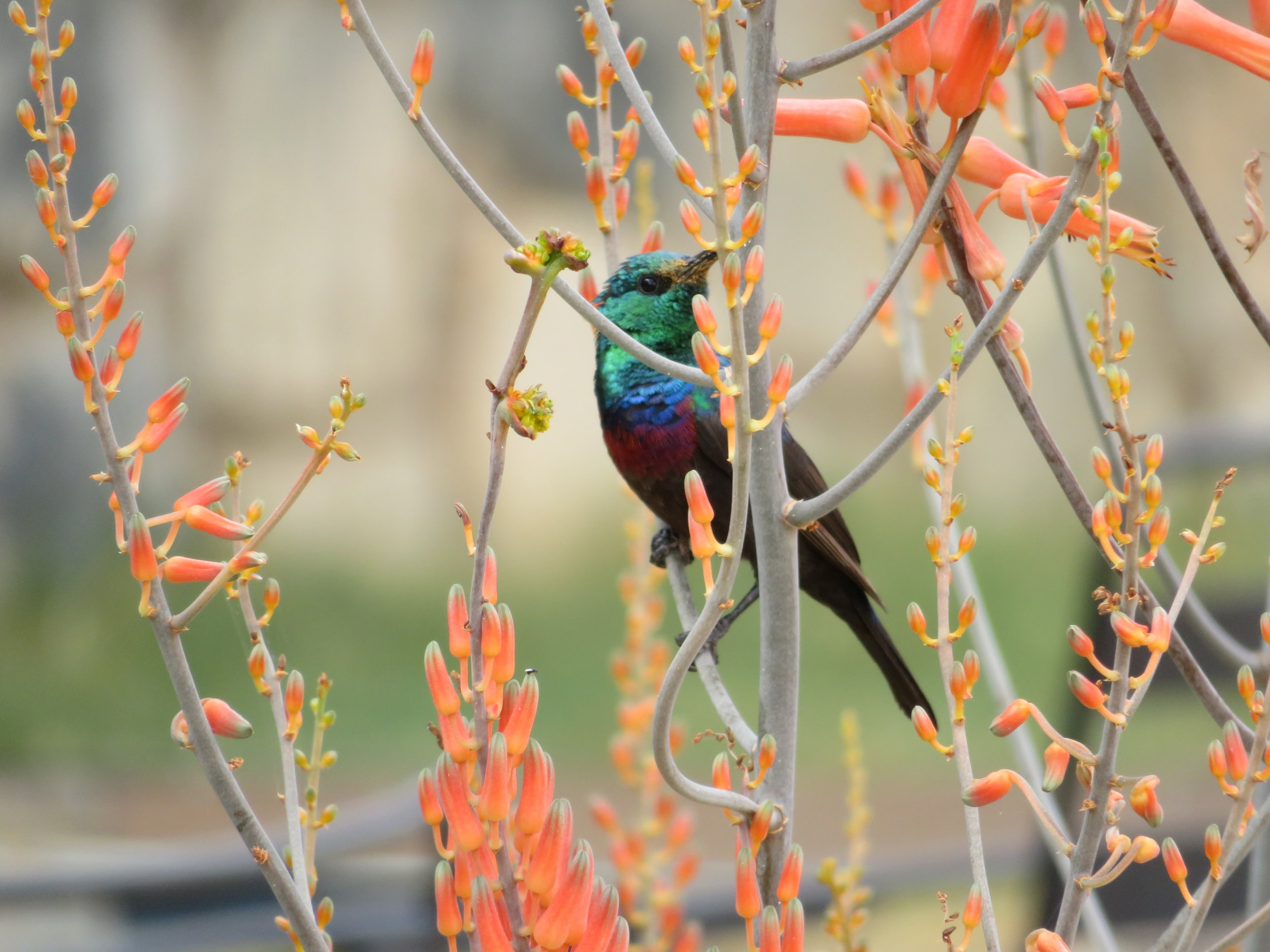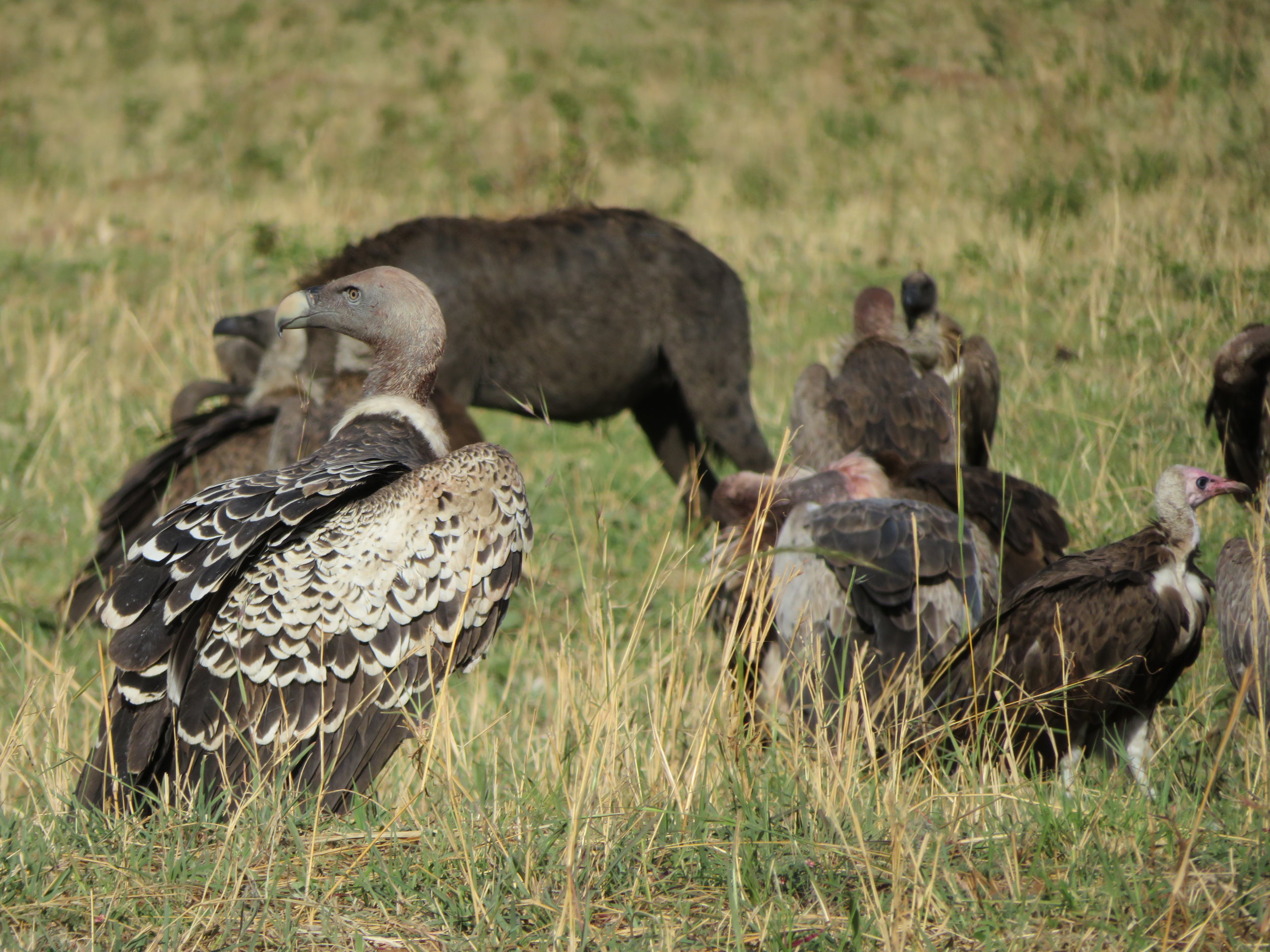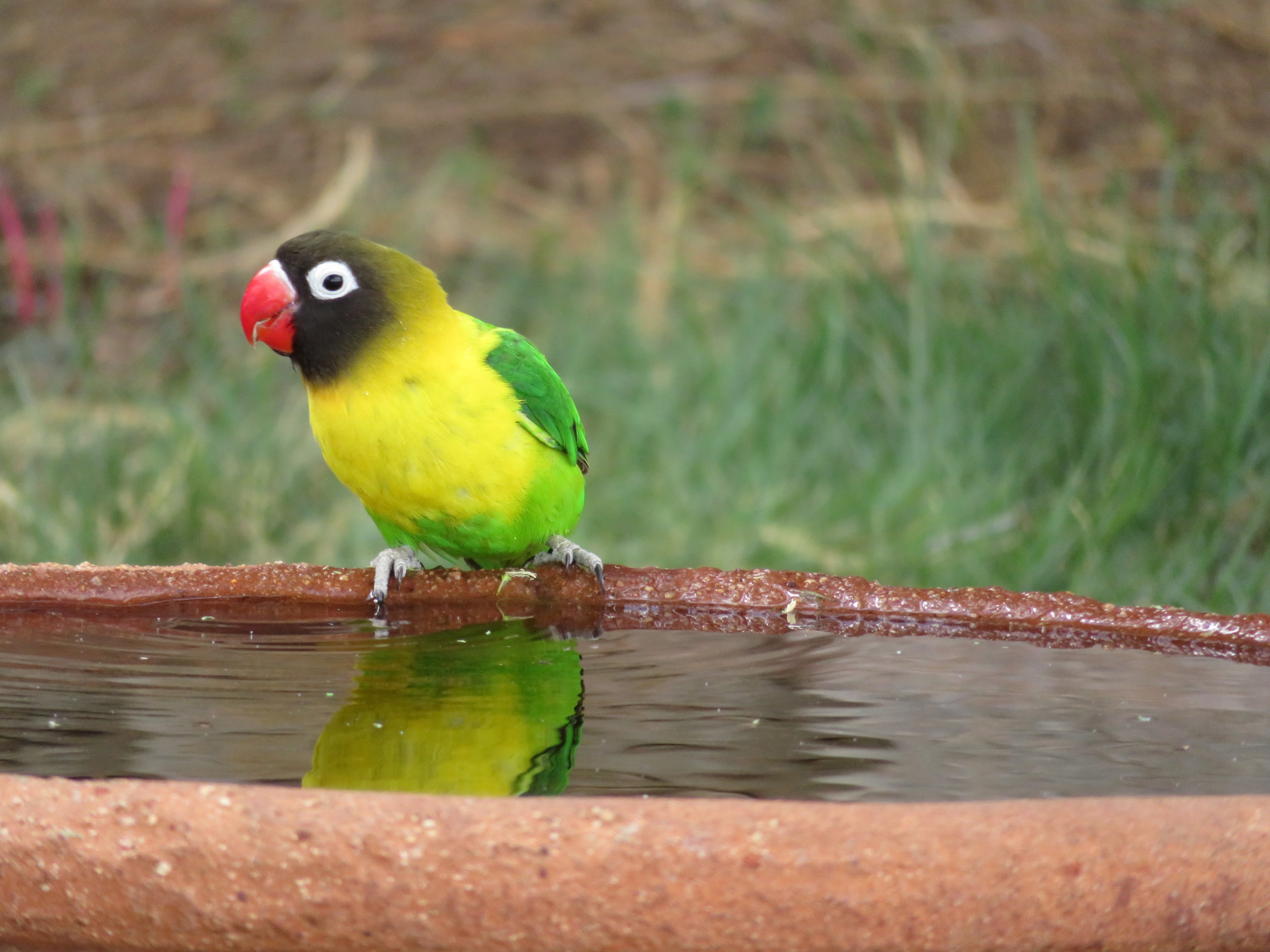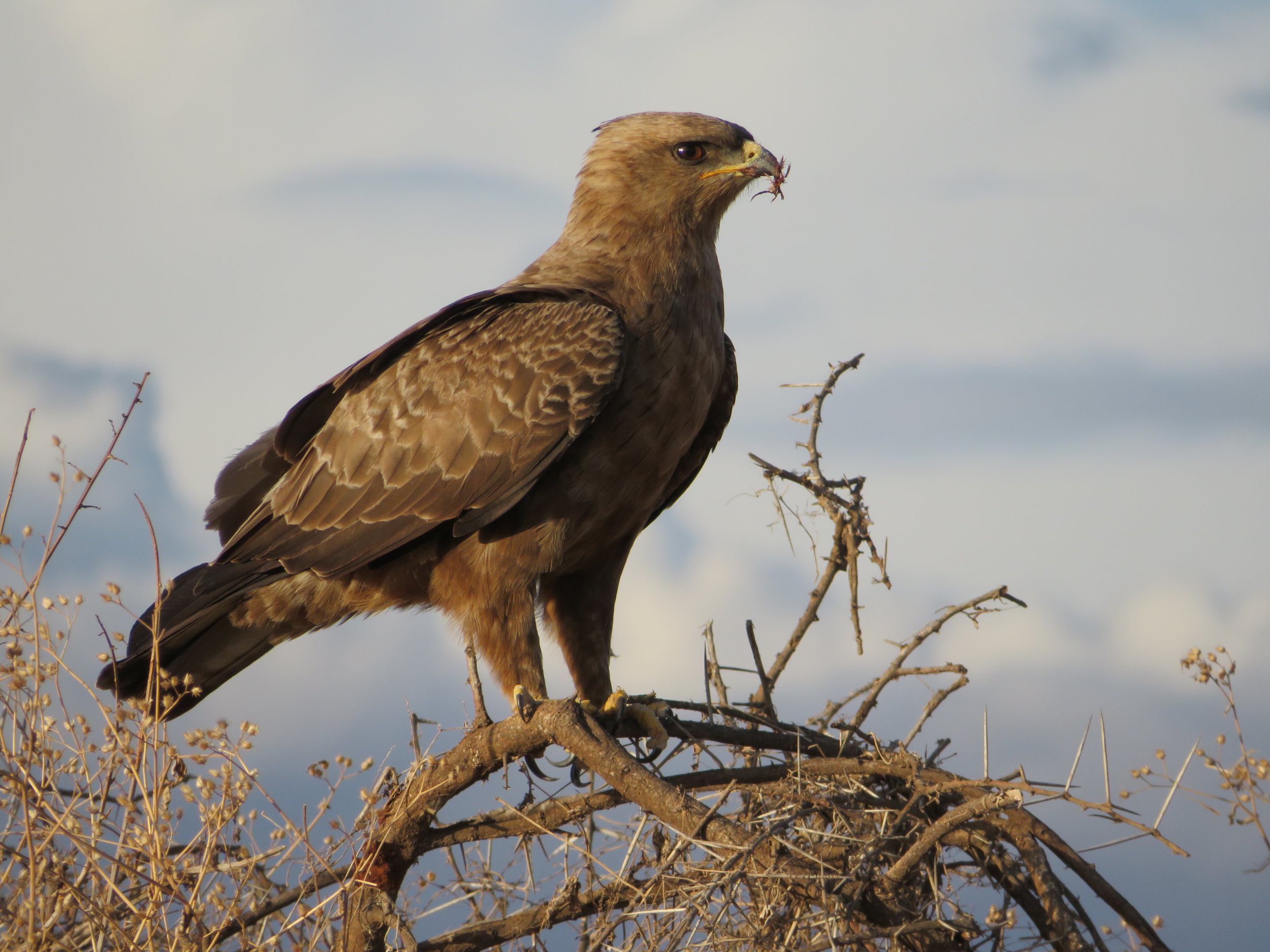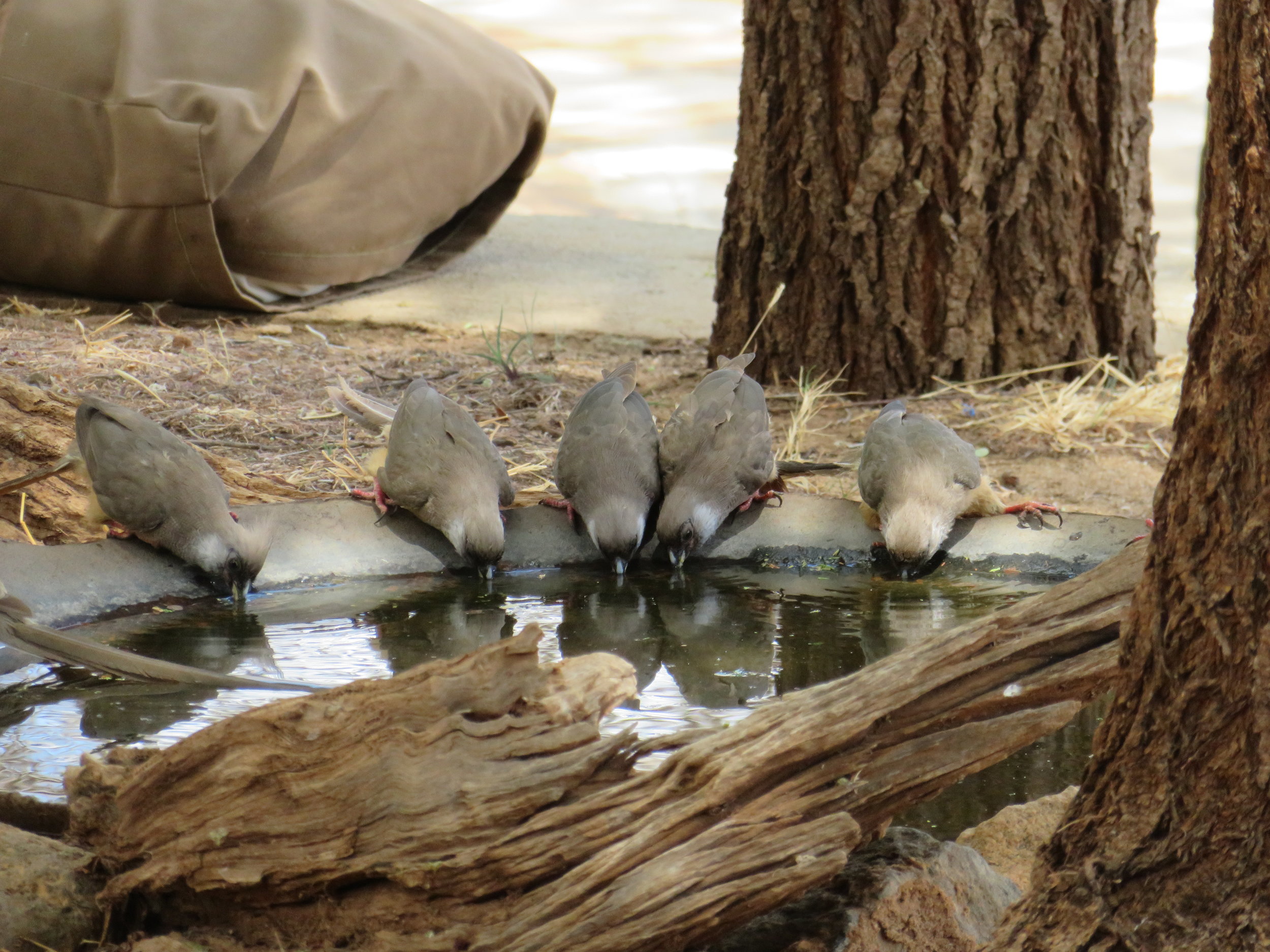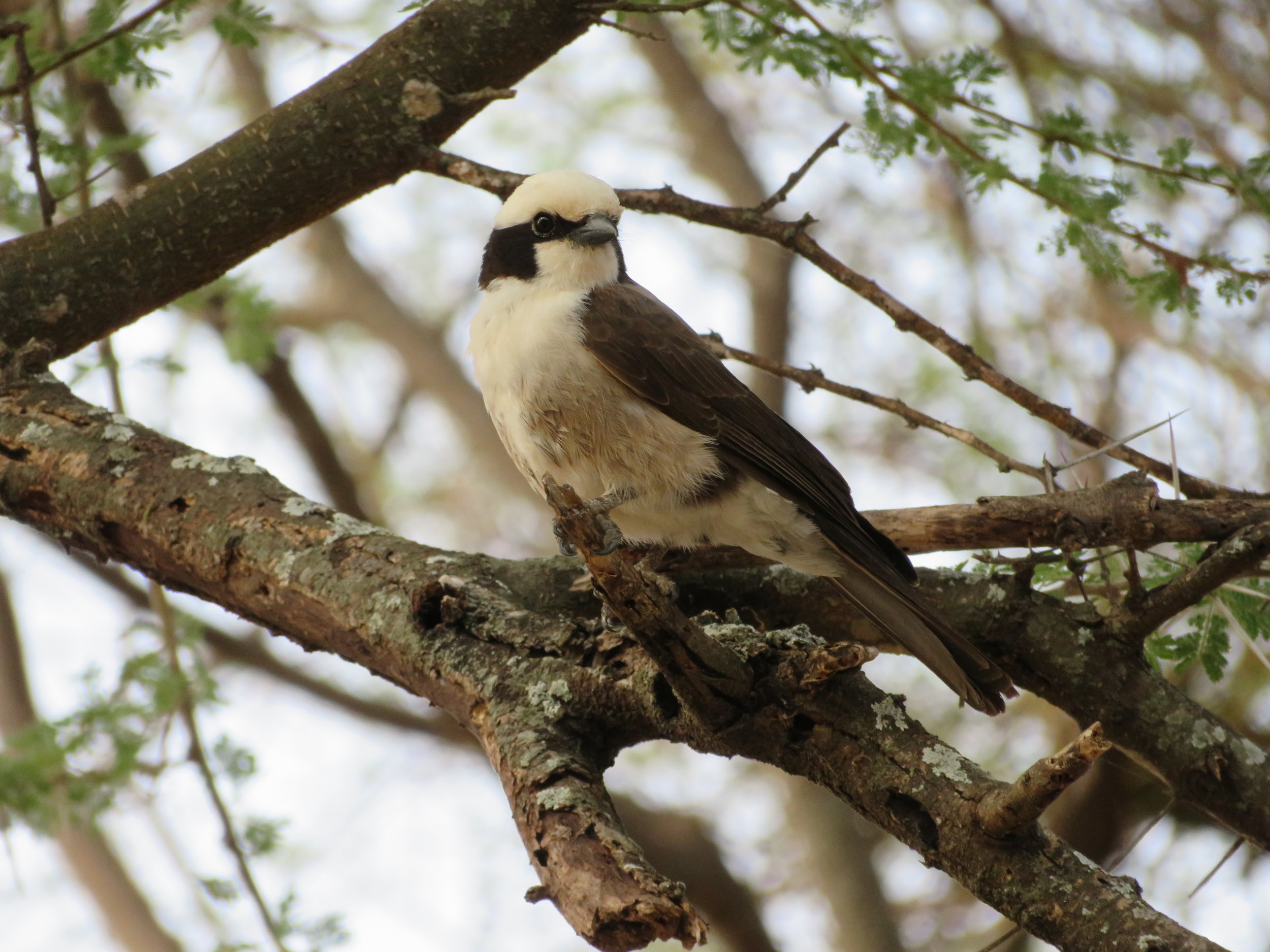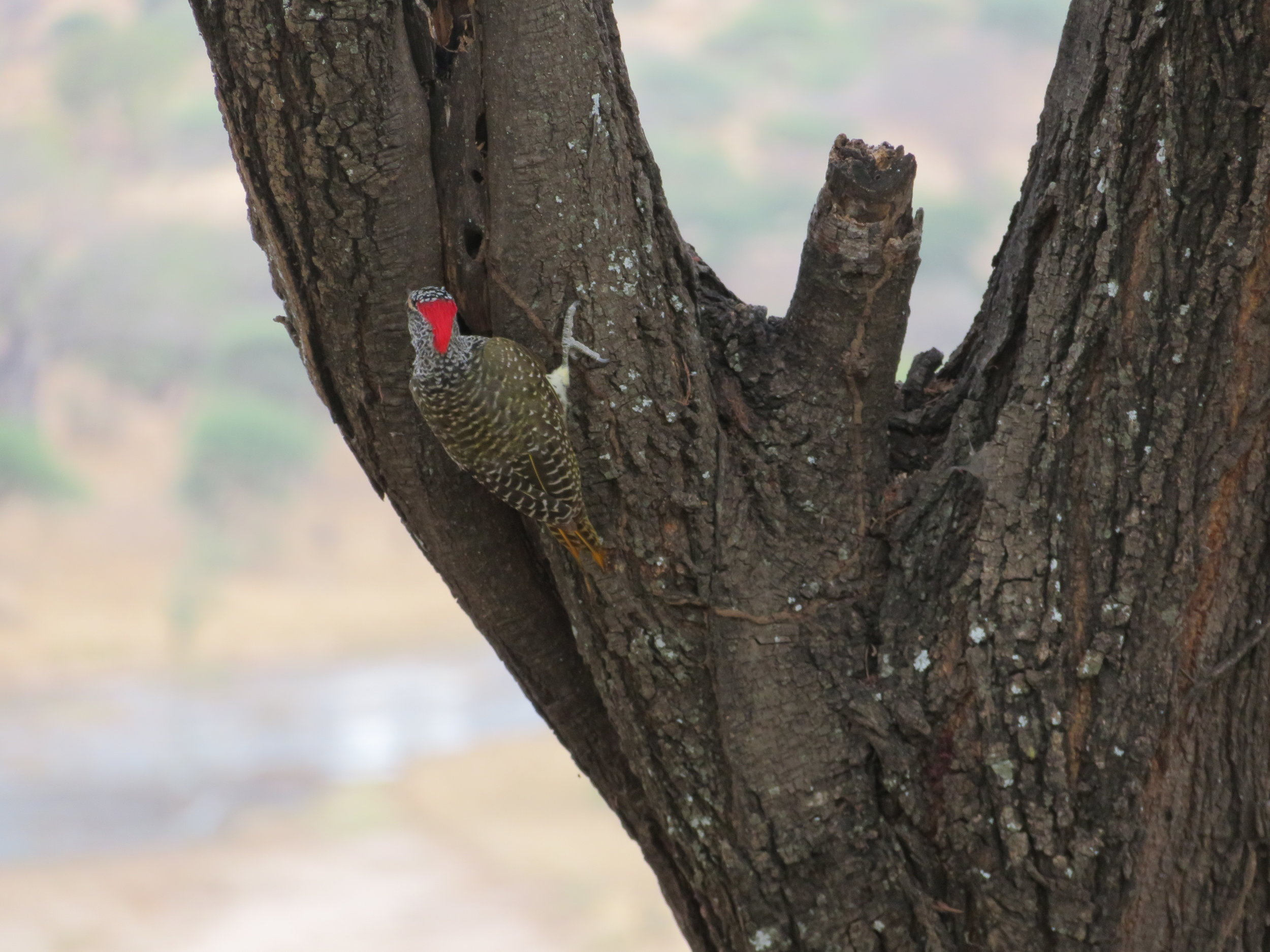Most of us go on safari hoping to see our favorite animal, rare animals and those that are uniquely striking. Black Rhino's fit those categories and more. They seem to be shy, preferring to browse or occasionally graze by themselves or one other. Mothers are deeply protective and careful with their babies and often are quite challenging to see and spend time with. We had been disappointed to not find one on a long and careful drive through Lerai Forest in Ngorongoro Caldera. We even slowly back tracked through after lunch as we had a tip that two rhinos were grazing in the brush there. None were to be seen on the plains either. So, it was off to the Serengeti where I had not been able to see rhino due to the immense distances and few numbers.
We eventually made it up to the Northern areas, near the rivers famous for the wildebeest crossings on their migration towards the rains. As a traveler on safari with me once said, our eyes were "full". Our hearts too, yet we still wished to spend some time with the elusive rhino. Days passed with no luck, and as we were driving alongside a lush sunken creek, I saw her. She was magnificent and proud, trotting towards the plain on the other side, baby staying close by her side. We crossed and parked at a respectful distance to enjoy the feel of being in the presence of such ancient animals. I was wondering how many babies she had had and the number three came instantly, simultaneously, and as my thought arose. Having fun with this, I turned to the others in the vehicle, especially to Carol Gurney, our teacher in animal communication on this safari. Curious to find out what she might 'hear'. Without my information given to her, she also came up with this is the third baby for this mama. Engaging fully in the instinctual connection of all senses, or telepathy as some call it, is an interesting and exciting experience.
On the more scientific side, my friend, guide and conservation officer for Ngorongoro Conservation Area, Donatus Gadiye, has written extensively on the forty some rhinos in the Caldera environs. He's familiar with all of them by name and is now onto researching the elephant migratory paths in order to best direct the rangers for their protection. Click for some of his research on Ngorongoro's Black Rhino population. Donatus is dedicating this paper to all of our friends who helped through GenSafaris.
In addition to this large population of endangered Black Rhinos, Ngorongoro holds some of the last huge male elephant 'tuskers'. They are inadvertently given more protection by the many tourist vehicles coming to this wonder of the world. Due to limited funds and vast spaces, it is currently impossible to protect them all. However, if more can be known about the numbers of elephants, their migratory and feeding routes, and therefore their daily locations, then funds and rangers may be allocated to protect them directly. It is important to visit and experience these living wonders of the world as well. If you can, please choose to give to support this endeavor. Funds from individuals and from my safari company (as a result of your tours), are given in this manner: Save the Tuskers of Ngorongoro
One final note: Good news from the Government of Tanzania. As of the first of January, the Tanzanian Government has banned all plastic carrier bags. This is to help protect the environment and to 'green' the environment more fully. Asante sana Tanzania and President John Magufuli!







